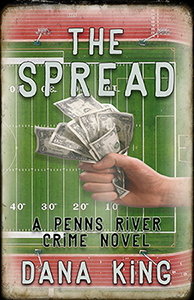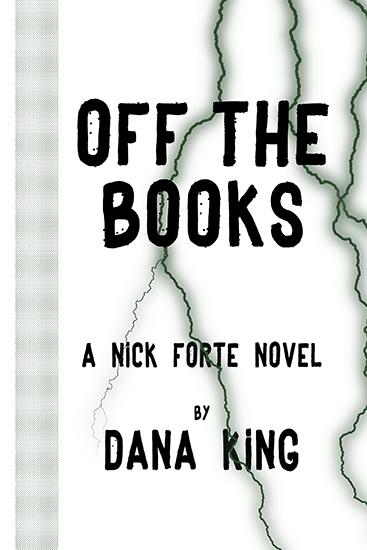Patrick H. Moore is an author and sentencing mitigation specialist from southern California whose third Nick Crane detective thriller, Rogues & Patriots, launched April 22 from Down & Out Books. Patrick was kind enough to sit for an interview to talk about a fascinating and timely subject for a novel or, in this case, a series.
One Bite at a Time: Welcome back to the blog. It’s
good to see you again.
Rogues & Patriots is the newest book in the Nick
Crane thriller series. How much of it depends on events in the first novel?
Patrick H. Moore: Rogues & Patriots is
actually the prequel to 27
Days. Thus, one could state accurately that the events in 27 Days
are triggered by what takes place in Rogues & Patriots.
OBAAT: Rogues & Patriots is shown as the second
“Nick Crane Thriller,” though it is the third book in which Crane is the
protagonist. What’s different about the first book that it is not included with
these two?
PHM: The first Nick Crane thriller, Cicero’s Dead,
is a stand-alone. It was indie-published by U.S. Indie Books in the fall of 2014. Anyone
who has read all three Nick Crane thrillers will observe that the character of
Nick Crane has undergone a metamorphosis between 2014 and 2023 when 27 Days
was published by Down & Out Books. Nick, in 27 Days and now Rogues
& Patriots, has shed the more or less middle-class persona that he
still carried in Cicero’s Dead. Nick, in his present incarnation,
carries the darkness of the “school of hard knocks” that characterized his
formative years. Although empathetic by nature, the current Nick is extremely
tough and capable, which is necessary for his survival given the nefarious nature
of his sworn enemies.
OBAAT: What is Crane’s background and what makes him
well-suited for these kind of stories?
PHM: Nick Crane grew up in a single parent household
in northern Minnesota on the edge of the Mesabi Range. His mother abandoned him
and his little brother Rafer when Nick was three years old. His father Adam was
a violent alcoholic. As Nick staggered through a most difficult childhood, he
learned to defend himself from his father’s insane rages and slept with a
hunting knife under his pillow. Because of his childhood, Nick developed a kind
of chronic PTSD that leaves him permanently on “red alert,” which is the
precise quality that enables him to survive the nasty scrapes he finds himself
in.
OBAAT: The Principals are a nasty piece of work;
you’re a professional investigator. How much of their philosophy and practices
come from personal experience? If not much – and, frankly, I hope you haven’t
had to deal with people like this – where did the clay from which you molded
them come from?
PHM: This is a great question, Dana. In my work as an
investigator and sentencing mitigation specialist, I’ve spent considerable time
with literally hundreds of clients. And a fair percentage of them have been
right wingers, but to my knowledge none of these folks were members of an
alt-right organization with a vendetta against our immigrants and minorities. So
where did the Principals come from? First, I wanted Nick Crane to be faced with
nearly insurmountable odds and the Principals filled that bill. Second, I
wanted Nick’s stories to be relevant to our current reality in which we, as a
nation, are faced with an existential threat to our continued existence as a
constitutional democracy. Thus, the Principals represent the monied right wing
forces that are currently trying to undermine our nation’s traditional respect
and tolerance for folks of diverse origin.
OBAAT: Last time you were here we spoke about your
work as a sentencing mitigation specialist. In re-reading that interview it
occurred to me this sounds like fascinating work that is rarely, if ever,
tackled in fiction. Do you ever have thoughts about writing such a book?
PHM: As you point out, sentencing mitigation
specialists are rarely, if ever, featured in crime fiction. This is probably
for two reasons. First, very few folks even know that sentencing mitigation
people exist. It’s kind of an LA thing. LA is where sentencing mitigation work
appears to have originated and where it became popular. Second, due to
attorney-client privilege, we mitigation people cannot reveal anything specific
about our clients. We are privy to many fascinating stories, but with this
privilege comes the responsibility of keeping everything on the down-low. That
being said, it would certainly be possible to write a crime novel/thriller with
a sentencing mitigation person as the protagonist. You and other readers will
note that in Rogues & Patriots, Nick occasionally refers to cases in
which he did mitigation work in conjunction with his attorney friend Jack Snow.
OBAAT: I didn’t get around to this last time, so I
will now. Who or what are the greatest influences on your writing? Can be
books, movies, TV, personal acquaintances, whatever.
PHM: My influences as a writer come from several
directions. First, the decade or longer I spent on the streets as a young man
made me very familiar with “street” and “thug” types and their often-questionable
ways. Then, in my sentencing work I’ve met and worked with some of the toughest
men anyone would ever want to encounter. For example, I had a client who “ran
the yard” at one of our California state prisons. One day while I was
interviewing him, he described how, as “yard boss,” he would give the orders when
inmates needed to be “checked,” and how his lieutenants would take care of
business and “drag the bodies out.” And, of course, I was influenced by
countless crime writers including Dennis Lehane, James Lee Burke, Lee Child, and
the dozens of other writers that I’ve read over the last decade including a Mr.
Dana King.
OBAAT (blushes, draws circle in dirt with toe): Aw,
shucks. Thank you. This leaves only the inevitable final question: What’s next
on your agenda?
PHM: I’m currently working on Book III in the “Nick
Crane vs. the Principals” series. It’s working title is Giant Steps and
in it, Nick, working in conjunction with FBI agent Carrie North, will hopefully
reach a point of safety in which the Principals are neutralized and/or defeated.
After Giant Steps I may write Nick Crane stand-alone thrillers, but
these plans are still in the early stages.
And, of course, I may ultimately conjure up a new protagonist if I
decide to move in a different direction…





